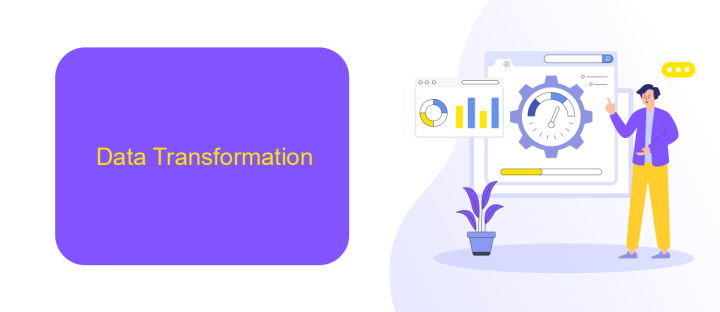In Which Stage of the ETL Process is Data Delivered to a Target System
The ETL (Extract, Transform, Load) process is crucial for managing and utilizing data within any organization. Each stage plays a vital role, but understanding when data is delivered to the target system is essential for optimizing performance and ensuring data integrity. This article delves into the specific stage of the ETL process where data is finally transferred to its destination.
Data Extraction
Data extraction is the initial phase in the ETL (Extract, Transform, Load) process, where raw data is retrieved from various sources. These sources can include databases, cloud storage, APIs, and even flat files. The goal is to gather relevant data that will be transformed and loaded into the target system for further analysis and reporting.
- Identify data sources: Determine where the data is stored and how it can be accessed.
- Data extraction tools: Utilize tools and services such as ApiX-Drive to facilitate seamless data extraction from various sources.
- Data quality checks: Ensure the extracted data is accurate and complete before moving on to the next stage.
Using a service like ApiX-Drive can significantly streamline the data extraction process by providing pre-built integrations and automation capabilities. This not only saves time but also reduces the risk of errors, ensuring that the data extracted is reliable and ready for transformation and loading into the target system.
Data Transformation

Data transformation is a critical stage in the ETL (Extract, Transform, Load) process, where raw data is converted into a format suitable for analysis and reporting. This phase involves various operations such as data cleansing, filtering, aggregation, and enrichment. The goal is to ensure that the data is accurate, consistent, and usable for the target system. During transformation, data may be standardized to follow a uniform structure, eliminating discrepancies and ensuring compatibility with the target database or system.
Modern ETL tools and services, such as ApiX-Drive, facilitate seamless data transformation by providing user-friendly interfaces and integration capabilities. ApiX-Drive allows users to set up automated workflows that handle data transformation tasks efficiently, reducing manual effort and minimizing errors. With features like real-time data synchronization and customizable transformation rules, ApiX-Drive ensures that the transformed data meets the specific requirements of the target system, thereby streamlining the entire ETL process.
Data Loading

Data loading is the final stage of the ETL (Extract, Transform, Load) process, where transformed data is delivered to the target system. This stage ensures that the data is accurately and efficiently transferred to its destination, whether it be a data warehouse, data mart, or another type of data repository. The success of this phase is critical for the overall effectiveness of the ETL process.
- Prepare the target system for data loading by ensuring it is ready to receive new data.
- Implement data validation checks to ensure data integrity and consistency.
- Use batch processing or real-time loading techniques based on the requirements of the target system.
- Monitor and log the loading process to identify and resolve any issues promptly.
Efficient data loading can be facilitated by integration services like ApiX-Drive, which automate and streamline the process of transferring data between systems. ApiX-Drive offers a user-friendly interface and robust features that help to set up and manage integrations, ensuring that data is accurately loaded into the target system with minimal manual intervention. This enhances the reliability and efficiency of the ETL process, making it easier to maintain data quality and consistency.
Data Validation

Data validation is a crucial step in the ETL process, ensuring that the data being delivered to the target system is accurate, consistent, and reliable. This stage involves a series of checks to confirm that the data meets the required standards and business rules before it is loaded into the target system.
During data validation, various techniques are employed to verify data integrity and quality. These techniques can range from simple format checks to more complex validation rules that cross-check data against predefined criteria. Ensuring data quality at this stage helps prevent errors and inconsistencies that could impact downstream processes and decision-making.
- Format validation: Ensuring data conforms to expected formats (e.g., date formats, numerical ranges).
- Consistency checks: Verifying data consistency across different sources and within the dataset.
- Completeness checks: Ensuring all required fields are populated and no critical data is missing.
- Business rule validation: Checking data against specific business rules and logic.
Tools like ApiX-Drive can facilitate data validation by automating many of these checks and integrating seamlessly with various data sources and target systems. By leveraging such tools, organizations can enhance their data validation processes, ensuring higher data quality and more reliable outcomes in their ETL workflows.
Data Utilization
Effective data utilization is crucial for deriving actionable insights and driving business decisions. Once data is delivered to the target system, it can be analyzed and visualized to identify trends, patterns, and anomalies. This stage involves the use of various analytical tools and platforms to transform raw data into meaningful information. Businesses can leverage dashboards, reports, and data visualization techniques to monitor key performance indicators and make informed decisions.
Integrating data from multiple sources can be challenging, but services like ApiX-Drive simplify this process. ApiX-Drive allows seamless integration of various data sources into your target system, ensuring that data is consistently updated and readily available for analysis. By automating data transfer and synchronization, ApiX-Drive helps businesses save time and reduce errors, enabling them to focus on utilizing data effectively for strategic initiatives. This integration capability ensures that data remains accurate and up-to-date, which is essential for reliable data utilization.
FAQ
What is the ETL process?
In which stage of the ETL process is data delivered to a target system?
Why is the Load stage important in the ETL process?
What are common challenges faced during the Load stage?
How can automation tools help with the Load stage of the ETL process?
Do you want to achieve your goals in business, career and life faster and better? Do it with ApiX-Drive – a tool that will remove a significant part of the routine from workflows and free up additional time to achieve your goals. Test the capabilities of Apix-Drive for free – see for yourself the effectiveness of the tool.

